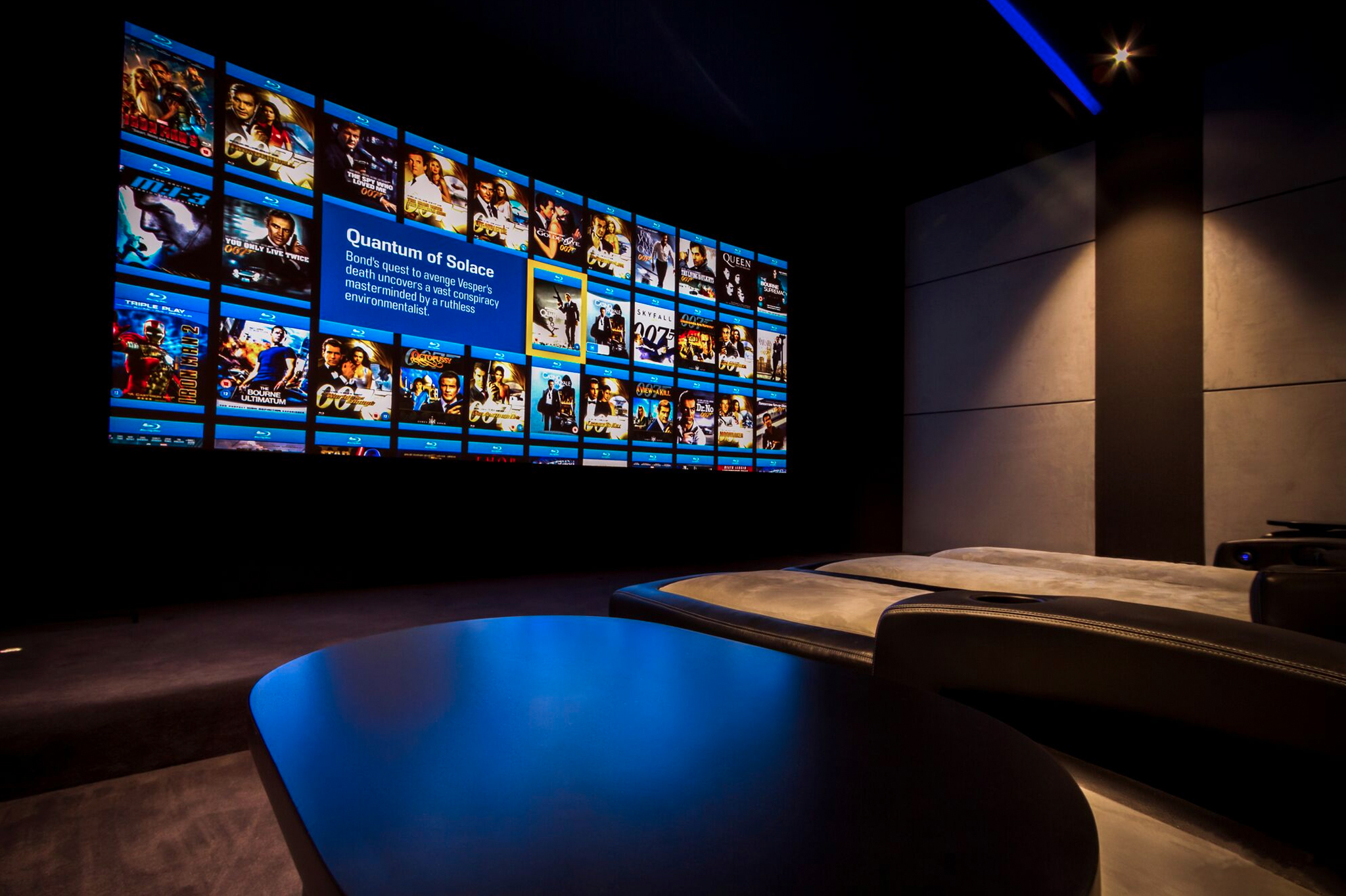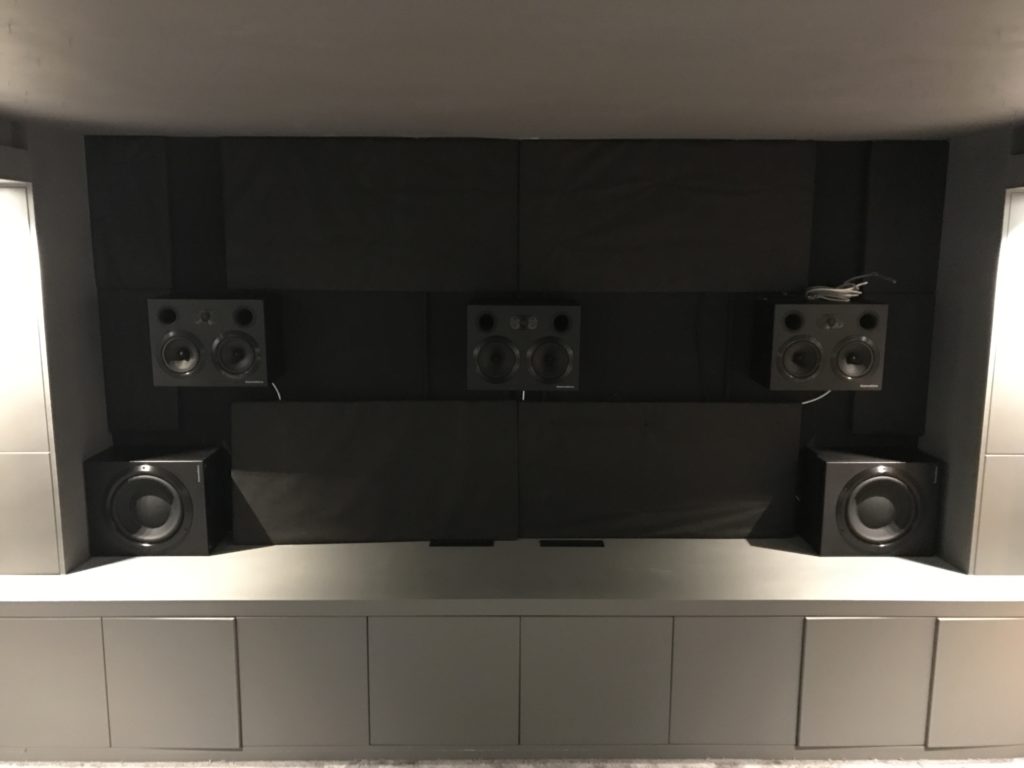Home Cinema & Media Room Screens
Whether a media room or dedicated bespoke home cinema, you need to understand the importance of the screen you are projecting on to. Find out why here
Much emphasis is given to projectors in home cinema – 4K, native 4K, laser, the spec sheets will befuddle you with numbers and specifications but it becomes almost meaningless if you are going to project your movie on to a piece of wall painted white, or worse a bed sheet hung on a wall. The screen you project onto is as vital a part of a balanced cinema system as any, and yet it is often overlooked in favour of better speakers or the latest spec projector. So, if you are looking at installing a home cinema, here is a brief explanation of what to look out for when it comes to the screen.

The first thing to consider is whether you want a fixed screen that remains permanently fixed to the wall, or a motorised screen that drops down from the ceiling. Generally speaking if you are having a dedicated home cinema room then a screen permanently fixed to the wall is a no-brainer. The material will be properly tensioned so that is remains flat and uniform. A motorised screen is perfect for multi-purpose “media rooms”. When not in use it is virtually invisible within the ceiling void. A media room tends to be a mixed use room where one of the main uses is good quality TV or film viewing and/or gaming.
Aspect Ratio
Most TV is produced in 16:9 format. That’s the shape of the widescreen TV you probably have in your living room. But most movies are filmed in a wider aspect 2.35:1 or even 2.4:1, this is why you get the black bars at the top and bottom of the screen when watching a movie on your TV. To keep this short and simple, if most of your viewing is “TV” viewing – sport, soaps, dramas, or gaming, then 16:9 is probably the best aspect ratio for you. If most of your viewing is movies then look at 2.35:1.
The flip side of course is if you have a 2.35:1 ratio screen and want to watch Sky Sports that you will see black bars at the sides.

Screen Innovations – a manufacturer of cinema projection screens has a superb video that demonstrates the importance of the material that you project on to; particularly in a media room where there may be ambient light in the room. Once you have watched this video why would you not have Black Diamond material?
Well, alas, Black Diamond is only available as a fixed screen. So if you want to have your screen disappear into the ceiling recess then Black Diamond is not for you. If you are building a dedicated room where you can control the lighting conditions, making the room dark with no or little ambient light. Black Diamond screens are also not available in an acoustically transparent option. Wait… acoustically transparent? We haven’t talked about that yet.
Acoustically Transparent or Solid?
Acoustically transparent screens are screens that are either woven or perforated to allow sound through them. This allows the speakers across the front sound stage to be placed behind the screen so the sound comes from where your brain is expecting it to rather than from the ceiling, above or below the screen.

Speakers placed behind an acoustically transparent screen will offer a much more realistic soundtrack
So when you are speaking to your cinema designer, make sure you are getting the screen that best suits your requirements. Let the designer know what you you intend to watch most of the time and the environment that you will be watching, can you make the room completely dark or will there be some ambient light? Understanding these factors will mean you get the viewing experience best suited to the media you are viewing.